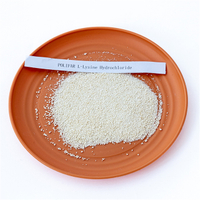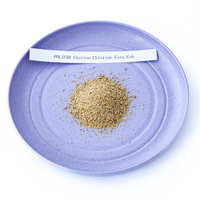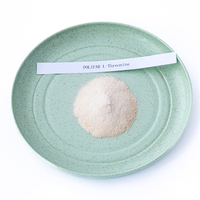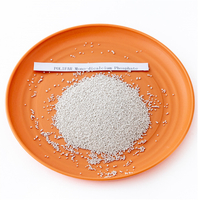content is empty!
| Availability: | |||||||||
|---|---|---|---|---|---|---|---|---|---|
| Hainanmycin premix, as a new Class I veterinary drug independently developed by China, is mainly used for the prevention and treatment of coccidiosis in chickens and the promotion of growth of ruminants. | |||||||||
Product Description:
Hainanmycin Sodium Premix is a non-antibiotic ionophore feed additive widely used in ruminant and poultry diets. It is known for its ability to modulate rumen fermentation, improve feed efficiency, and promote animal growth. As a new-generation growth promoter, Hainanmycin serves as an alternative to traditional antibiotics and helps reduce the risk of antimicrobial resistance in livestock production.
Key Benefits:
Effectively controls coccidiosis in poultry and livestock
Enhances feed efficiency and promotes growth performance
Reduces intestinal diseases and improves animal health
Stable formulation suitable for various feed processing methods
Cost-effective solution for long-term coccidiosis management
Application Range and Recommended Dosage:
| Application Range | Uses | Concentration of Active Ingredients in Compound Feed(ppm) | The amount of 1% Hainanmycin added to 1000kg compound feed (g/ton feed) |
| Chicken | Coccidia prevention medicine | 5-7.5 | 500-750 |
| Fattening cattle and sheep | Growth promotion | 3-5 | 300-500 |
Usage Scenarios:
1. Coccidiosis Control in Chickens
Applicable Coccidia Types: Broad-spectrum protection against tender, toxic, giant, agglomerate, and mild Eimeria coccidia, with particular effectiveness against cecal (tender), intestinal (toxic, giant), and rectal coccidia.
Recommended Dosage: Add 500–750 g of 1% premix (5–7.5 ppm active ingredient) per ton of feed for 7–10 days.
Proven Efficacy: Anticoccidial Index (ACI) of 175–196 (>180 for high efficacy), with an ACI of 180.5 against giant Eimeria, outperforming monensin and diclazuril.
2. Necrotic Enteritis Control
Prevents and treats necrotic enteritis caused by Clostridium perfringens, balancing the intestinal flora by inhibiting Gram-positive bacteria (such as Clostridium).
3. Ruminant Growth Promotion
Target Animals: Fattening cattle and sheep. Mechanism of Action: Modulates rumen microbial composition, inhibiting lactic and acetic acid-producing Gram-negative bacteria, increasing propionic acid content, and improving feed net energy and nitrogen utilization. It also promotes intestinal wall thinning to enhance nutrient absorption.
Dosage: Add 300–500 g of 1% premix per ton of feed (active ingredient 3–5 ppm).
Core Selling Points:
1. Multifunctional "One Drug, Three Functions"
Anticoccidial + Growth Promoter + Antibacterial:
Anticoccidial (ACI > 180);
Significantly improves broiler weight gain and feed conversion rate, improving meat quality, hence the name "Growth Factor";
Inhibits Gram-positive bacteria and anaerobic fungi, preventing and controlling clostridial enteritis.
2. Safety and Environmental Protection
No Residue: Not absorbed in the intestines, excreted unchanged, leaving no tissue residue.
Short Withdrawal Period: Only 7 days, in line with green farming trends.
Low Resistance: Not widely used globally, the risk of resistance is extremely low, making it the preferred choice for drug rotation.
3. Significant Economic Benefits: Improves feed conversion rate and reduces overall costs;
Suitable year-round (no seasonal restrictions), ensuring stable production.
Product Description:
Hainanmycin Sodium Premix is a non-antibiotic ionophore feed additive widely used in ruminant and poultry diets. It is known for its ability to modulate rumen fermentation, improve feed efficiency, and promote animal growth. As a new-generation growth promoter, Hainanmycin serves as an alternative to traditional antibiotics and helps reduce the risk of antimicrobial resistance in livestock production.
Key Benefits:
Effectively controls coccidiosis in poultry and livestock
Enhances feed efficiency and promotes growth performance
Reduces intestinal diseases and improves animal health
Stable formulation suitable for various feed processing methods
Cost-effective solution for long-term coccidiosis management
Application Range and Recommended Dosage:
| Application Range | Uses | Concentration of Active Ingredients in Compound Feed(ppm) | The amount of 1% Hainanmycin added to 1000kg compound feed (g/ton feed) |
| Chicken | Coccidia prevention medicine | 5-7.5 | 500-750 |
| Fattening cattle and sheep | Growth promotion | 3-5 | 300-500 |
Usage Scenarios:
1. Coccidiosis Control in Chickens
Applicable Coccidia Types: Broad-spectrum protection against tender, toxic, giant, agglomerate, and mild Eimeria coccidia, with particular effectiveness against cecal (tender), intestinal (toxic, giant), and rectal coccidia.
Recommended Dosage: Add 500–750 g of 1% premix (5–7.5 ppm active ingredient) per ton of feed for 7–10 days.
Proven Efficacy: Anticoccidial Index (ACI) of 175–196 (>180 for high efficacy), with an ACI of 180.5 against giant Eimeria, outperforming monensin and diclazuril.
2. Necrotic Enteritis Control
Prevents and treats necrotic enteritis caused by Clostridium perfringens, balancing the intestinal flora by inhibiting Gram-positive bacteria (such as Clostridium).
3. Ruminant Growth Promotion
Target Animals: Fattening cattle and sheep. Mechanism of Action: Modulates rumen microbial composition, inhibiting lactic and acetic acid-producing Gram-negative bacteria, increasing propionic acid content, and improving feed net energy and nitrogen utilization. It also promotes intestinal wall thinning to enhance nutrient absorption.
Dosage: Add 300–500 g of 1% premix per ton of feed (active ingredient 3–5 ppm).
Core Selling Points:
1. Multifunctional "One Drug, Three Functions"
Anticoccidial + Growth Promoter + Antibacterial:
Anticoccidial (ACI > 180);
Significantly improves broiler weight gain and feed conversion rate, improving meat quality, hence the name "Growth Factor";
Inhibits Gram-positive bacteria and anaerobic fungi, preventing and controlling clostridial enteritis.
2. Safety and Environmental Protection
No Residue: Not absorbed in the intestines, excreted unchanged, leaving no tissue residue.
Short Withdrawal Period: Only 7 days, in line with green farming trends.
Low Resistance: Not widely used globally, the risk of resistance is extremely low, making it the preferred choice for drug rotation.
3. Significant Economic Benefits: Improves feed conversion rate and reduces overall costs;
Suitable year-round (no seasonal restrictions), ensuring stable production.






